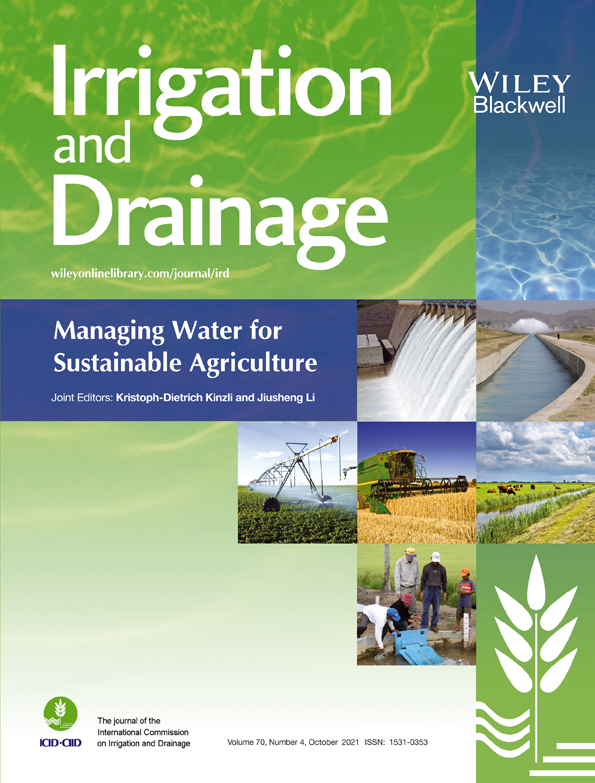Simplified method for estimating the optimal cut-off time of closed-end border irrigation*
Funding information: the Scientific Research Programme by the Shaanxi Provincial Education Department, Grant/Award Number: 20JS099; the Natural Science Basic Research Programme of Shaanxi, Grant/Award Number: 2019JM-063; the National Programme on Key Research Projects during the 13th Five-Year Plan Period, Grant/Award Number: 2016YFC0400203; National Natural Science Foundation of China, Grant/Award Numbers: 51909208, 51579205
Abstract
enClosed-end border irrigation has been widely used in China; however, such irrigation is usually associated with poor performance. Therefore, the performance of closed-end border irrigation must be improved. The objectives of this study were to develop and verify a simplified method for estimating the optimal cut-off time (Tcop) for closed-end border irrigation. The simulated results revealed that the relationship between Tcop and the time when water advanced to 75% of the length of the border (T0.75L) can be characterized by using a power function. The comprehensive irrigation performance indicator Y (which is the geometric mean of the application efficiency and Christiansen's uniformity) obtained using the proposed method was consistent with that obtained using existing methods. The mean absolute value of the relative error and the standard error of Y between the proposed method and existing methods was 3.35 and 0.69%, respectively. This result indicates that the proposed method has high reliability. Moreover, in the proposed method, only T0.75L is required to determine Tcop for closed-end border irrigation. Therefore, the proposed method has high practicality and can be used to improve the performance of closed-end border irrigation.
Abstract
frRésumé
L'irrigation en circuit fermé a été largement utilisée en Chine; cependant, une telle irrigation est généralement associée à de mauvaises performances. Par conséquent, la performance de l'irrigation en circuit fermé doit être améliorée. Les objectifs de cette étude étaient de développer et de vérifier une méthode simplifiée pour estimer le temps de coupure optimal (Tcop) pour l'irrigation en circuit fermé. Les résultats simulés ont révélé que la relation entre Tcop et le moment où l'eau a avancé jusqu'à 75% de la longueur du circuit (T0.75L) peut être caractérisée à l'aide d'une fonction de puissance. L'indicateur complet de performance d'irrigation Y (qui est la moyenne géométrique de l'efficacité de l'application et de l'uniformité de Christiansen) obtenu à l'aide de la méthode proposée était cohérent avec celui obtenu à l'aide des méthodes existantes. La valeur absolue moyenne de l'erreur relative et de l'erreur type de Y entre la méthode proposée et les méthodes existantes était de 3.35 et 0.69%, respectivement. Ce résultat indique que la méthode proposée a une grande fiabilité. De plus, dans la méthode proposée, seul T0.75L est nécessaire pour déterminer le Tcop pour l'irrigation en circuit fermé. Par conséquent, la méthode proposée est très pratique et peut être utilisée pour améliorer les performances de l'irrigation en circuit fermé.




